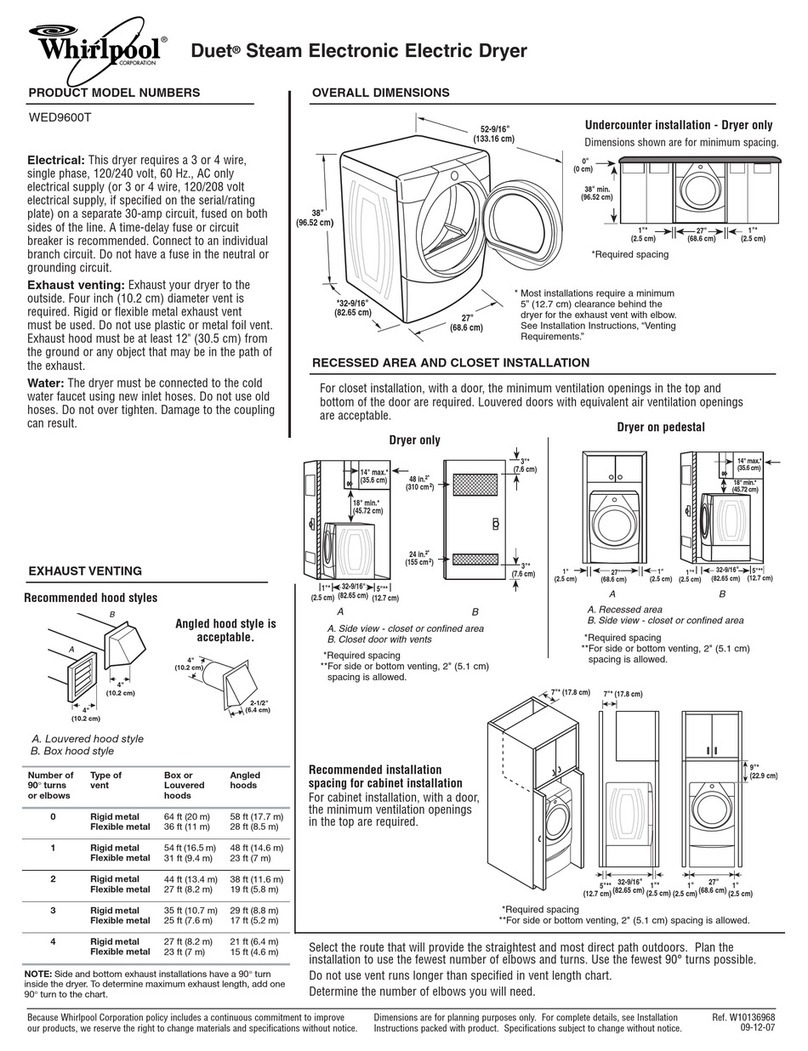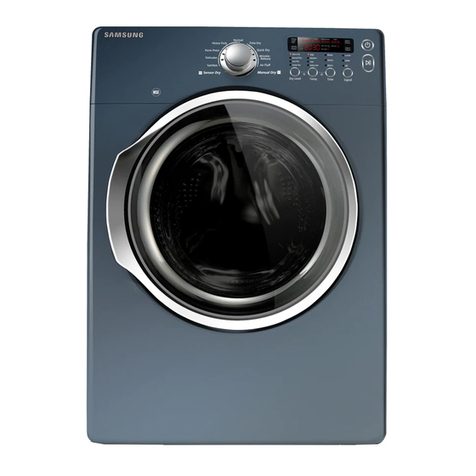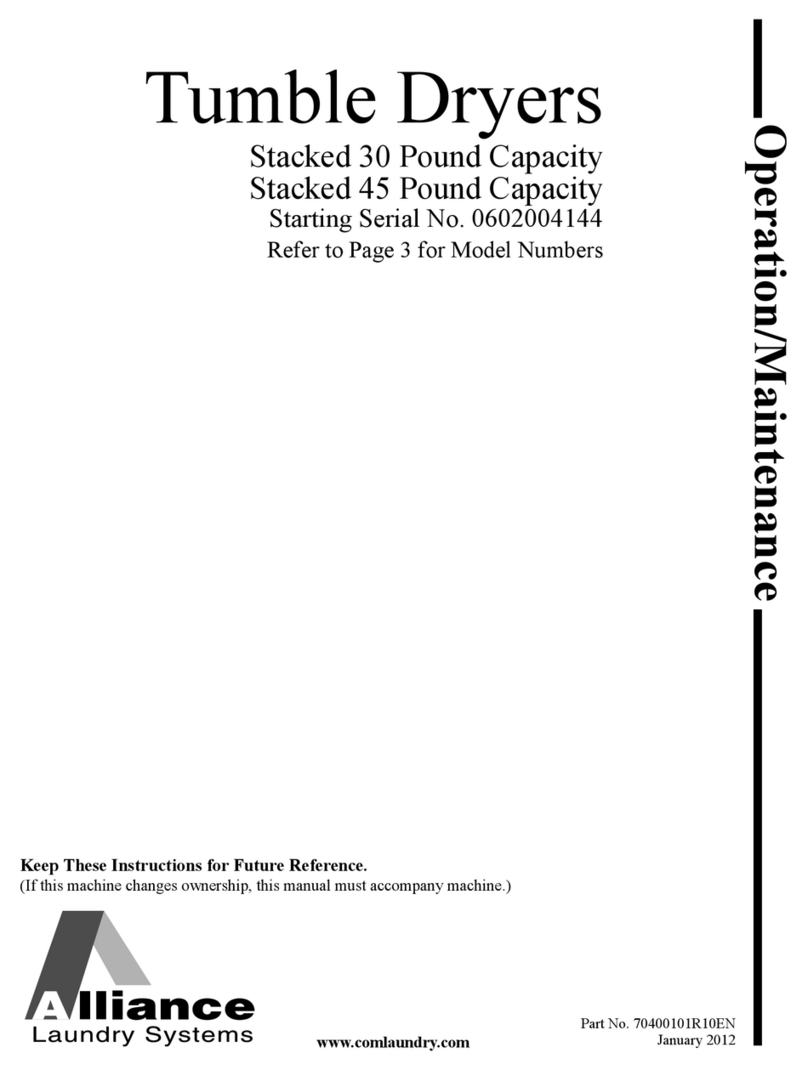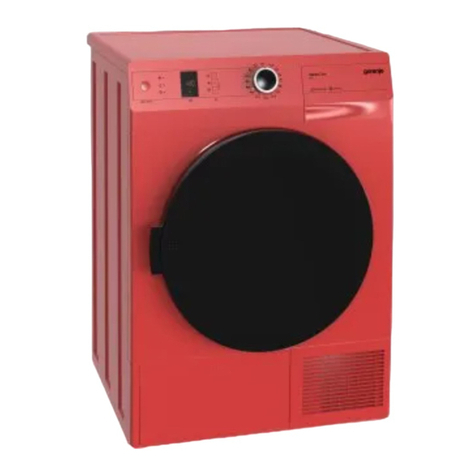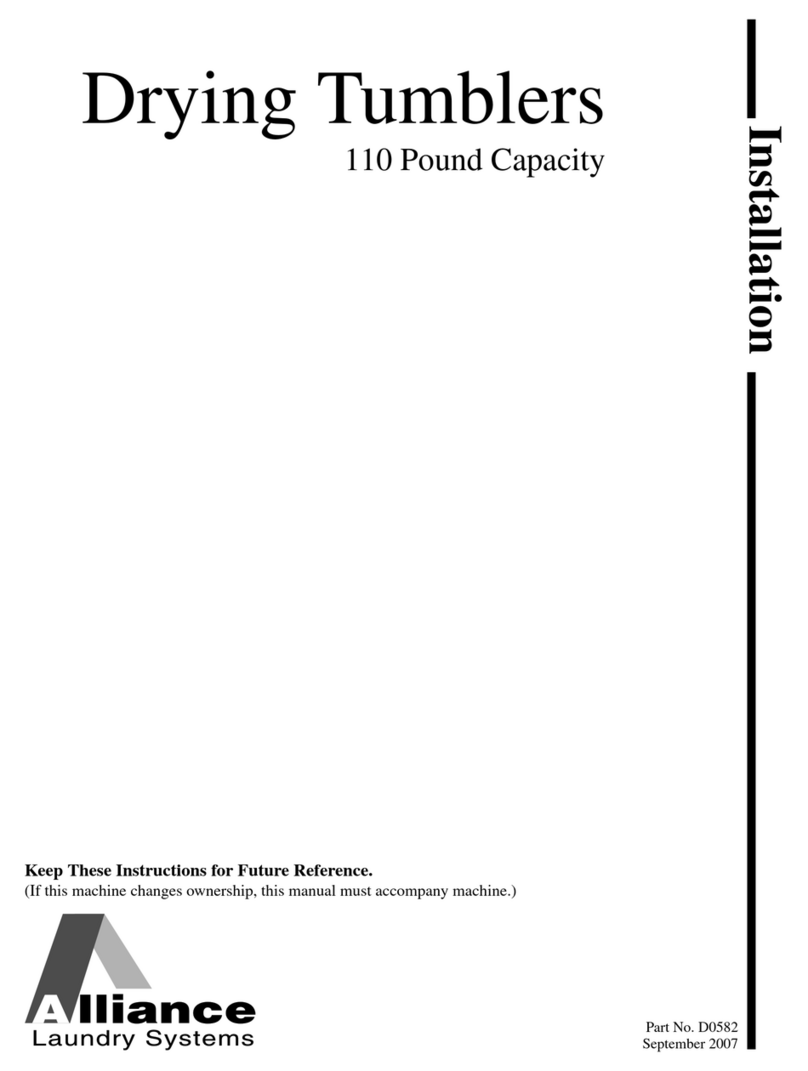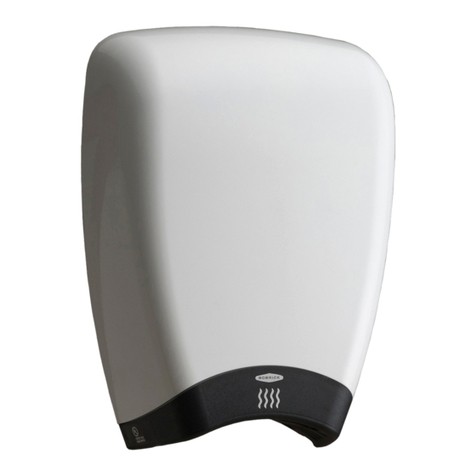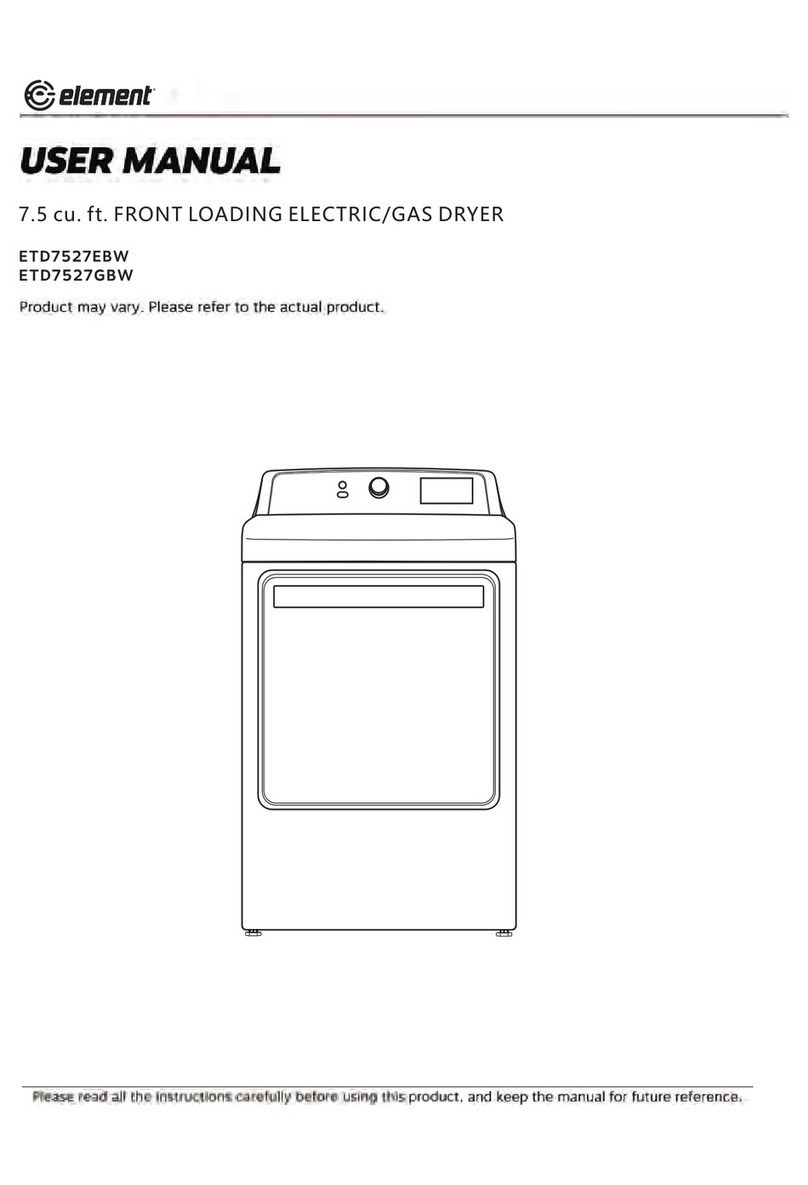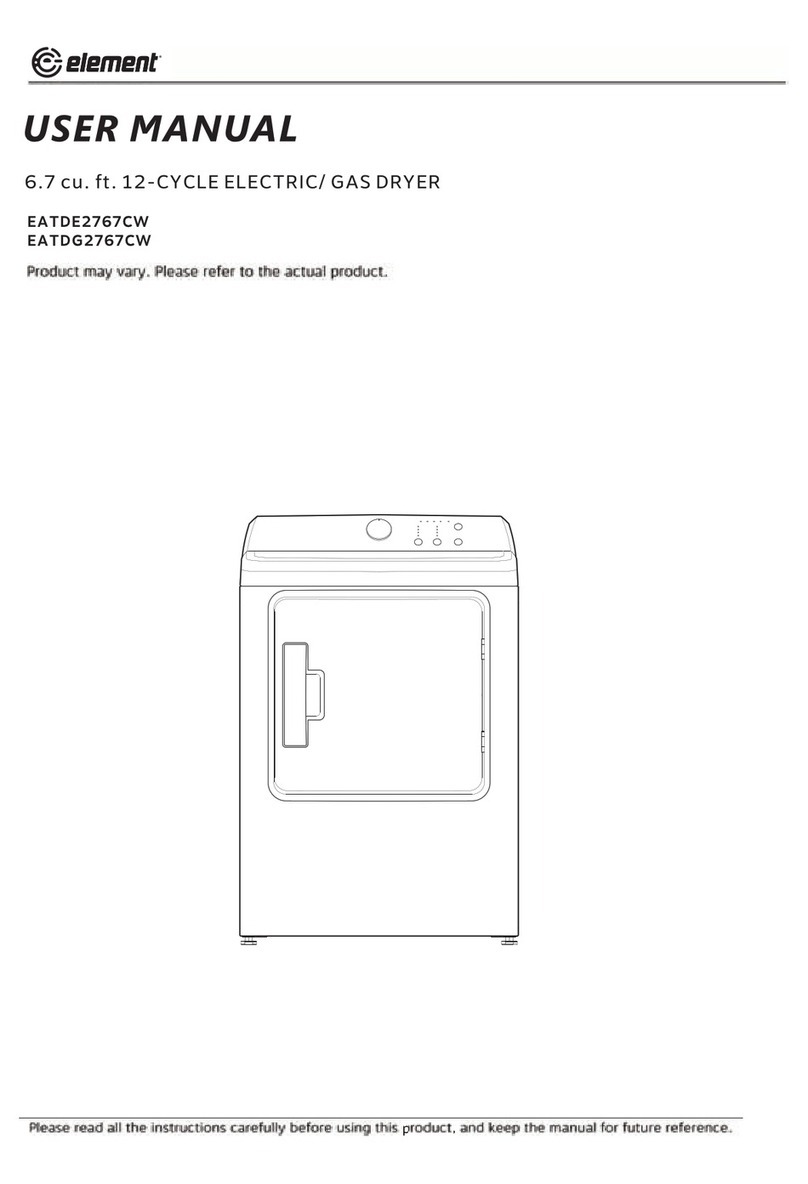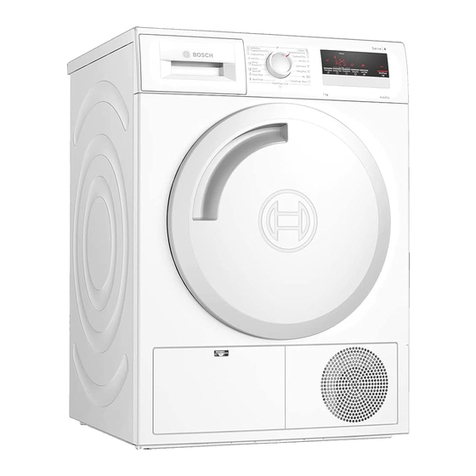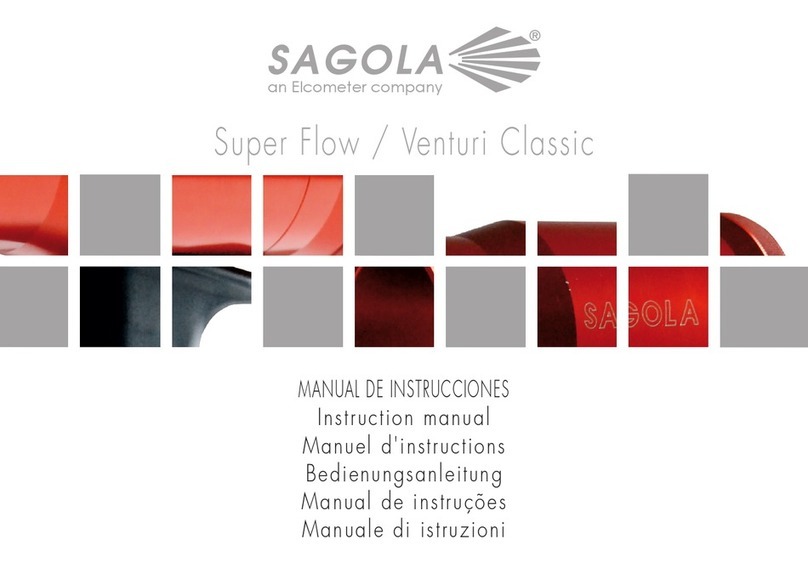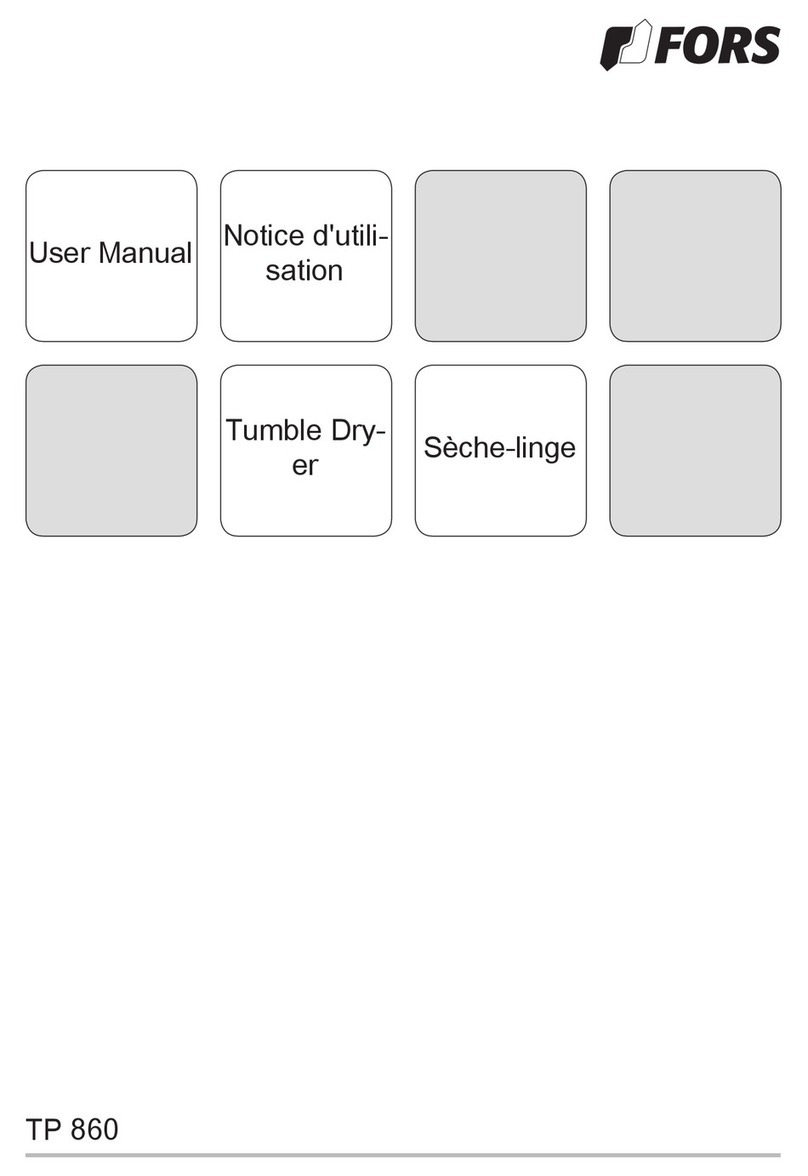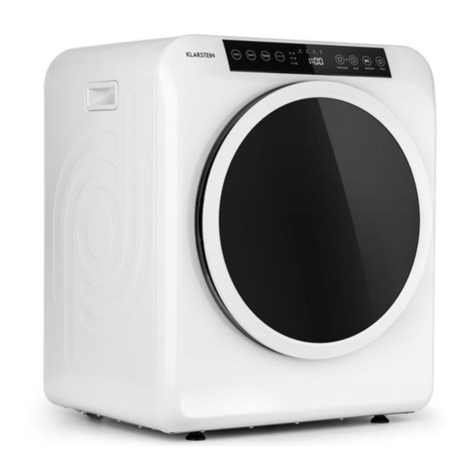
WARNING
The correct exhaust installation is YOUR RESPONSIBILITY.
• Use a 4-inch (10.2cm) diameter rigid aluminum or rigid galvanized
steel duct.
• Do not use smaller diameter than recommended diameter duct.
• Ducts larger than 4 inches (10.2cm) in diameter can result in
increased accumulation of lint and changes in performance
• Lint should be removed regularly from internal filter every cycle and
from ducts.
• If a flexible metal duct must be used, use the type with a stiff sheet
metal wall. Do not use a flexible duct with a thin foil wall. A serious
blockage can result if the flexible metal duct is bent too sharply.
• Never install any type of flexible duct in walls, ceilings, or other
concealed spaces.
• Keep the exhaust duct as straight, short as possible, minimum elbows
• Secure joints with aluminum tape. Do not use screws.
• Plastic flexible ducts can kink, sag, be punctured, reduce airflow,
extend drying times, and affect the dryer operation.
• Exhaust systems longer than recommended 90 ft can extend drying
times, affect machine operations, and collect lint.
• The exhaust duct should end with an exhaust hood with a swing-out
damper to prevent back drafts and entry of wildlife. Never use an
exhaust hood with a magnetic damper.
• The hood should have at least 12 inches (30.5cm) of clearance
between the bottom of the hood and the ground or other
obstruction. The hood opening should point down.
• Never install a screen over the exhaust outlet.
• To avoid lint buildup, do not exhaust the dryer directly into a window
well. Do not exhaust under a house or porch.
• If the exhaust duct must run through an unheated area, the duct
should be insulated and slope slightly down towards the exhaust
hood to reduce condensation and lint buildup.
• Inspect and clean the interior of the exhaust system at least once a
year. Unplug the power cord before cleaning.
• Check frequently to make sure the exhaust hood damper opens and
closes freely.
• Check once per month, and clean at least once per year. NOTE:
If your clothes are not getting dry, then check the ducting for
obstructions.
• Do not exhaust the dryer into a wall, ceiling, crawl space, or
concealed space of a building, gas vent, or any other common duct
or chimney. This could create a fire hazard from the lint expelled by
the dryer.
• Do not use non-metallic flexible duct.
• To reduce the risk of fire, this dryer MUST BE EXHAUSTED
OUTDOORS.
Dryer
Safety
Operation
Requirements
Parts and
Features
Installation
Instructions Dryer Use
Appendix
Dryer Care
Troubleshooting
13






















